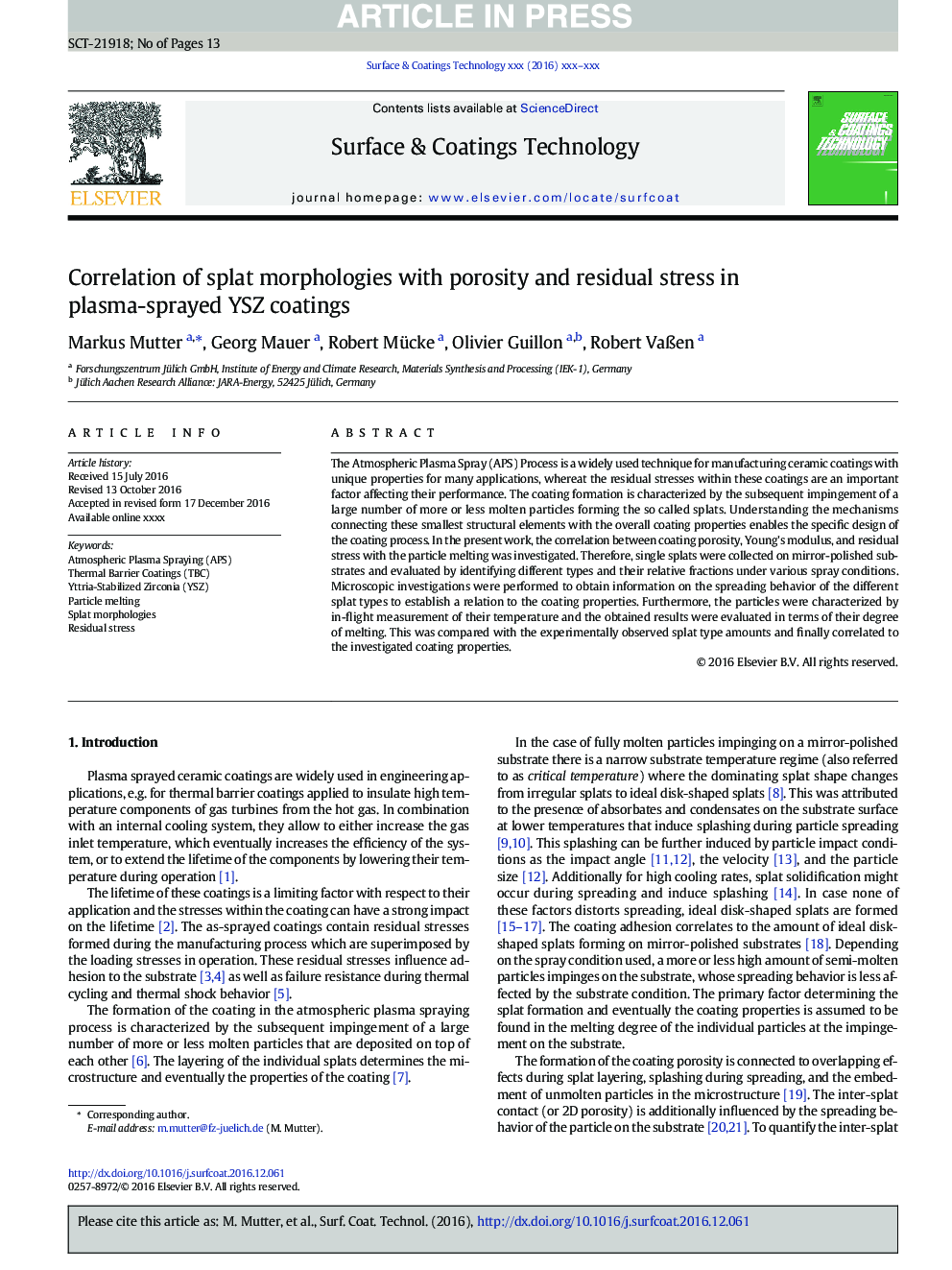| Article ID | Journal | Published Year | Pages | File Type |
|---|---|---|---|---|
| 5465452 | Surface and Coatings Technology | 2017 | 13 Pages |
Abstract
The Atmospheric Plasma Spray (APS) Process is a widely used technique for manufacturing ceramic coatings with unique properties for many applications, whereat the residual stresses within these coatings are an important factor affecting their performance. The coating formation is characterized by the subsequent impingement of a large number of more or less molten particles forming the so called splats. Understanding the mechanisms connecting these smallest structural elements with the overall coating properties enables the specific design of the coating process. In the present work, the correlation between coating porosity, Young's modulus, and residual stress with the particle melting was investigated. Therefore, single splats were collected on mirror-polished substrates and evaluated by identifying different types and their relative fractions under various spray conditions. Microscopic investigations were performed to obtain information on the spreading behavior of the different splat types to establish a relation to the coating properties. Furthermore, the particles were characterized by in-flight measurement of their temperature and the obtained results were evaluated in terms of their degree of melting. This was compared with the experimentally observed splat type amounts and finally correlated to the investigated coating properties.
Keywords
Related Topics
Physical Sciences and Engineering
Materials Science
Nanotechnology
Authors
Markus Mutter, Georg Mauer, Robert Mücke, Olivier Guillon, Robert VaÃen,
